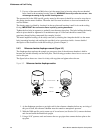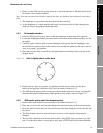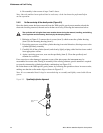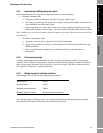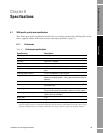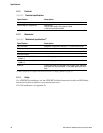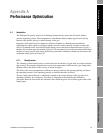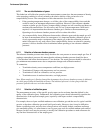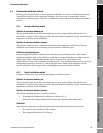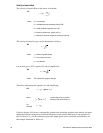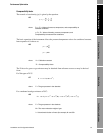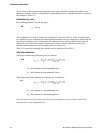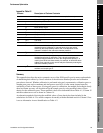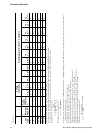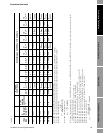48 Micro Motion 3098 Gas Specific Gravity Meter
Performance Optimization
A.1.2 The non-ideal behaviour of gases
This behaviour will affect the operation of the measurement system since the measurement of density
at the operating condition is not only related to the relative density of the gas but also to its
compressibility factors. The consequences of this characteristic are as follows:
• If the operating temperature changes, so will the value of the compressibility factor and this
would be seen as an instrument temperature coefficient. However, if the reference chamber
contains a similar gas, the Z factor (compressibility) changes are self-cancelling and hence no
resultant effect materializes. For this reason, and if a low system temperature coefficient is
required, it is important that the reference chamber gas is similar to the measurement gas.
Operating at low reference chamber pressure will also reduce this effect.
• Any compressibility factor differences between the calibration gases and the sample gas will
be seen as measurement offsets. In consequence, it is important that the calibration gases do
closely represent the major constituents of the sample gas or that the calibration procedure
makes allowances for any such offsets. Since compressibility factors are related to operating
pressure, it follows that this offset is minimized when operating at low reference chamber
pressures.
A.1.3 Selection of reference chamber pressure
The reference chamber pressure must always be above the vent pressure to ensure sample gas flow. If
venting to atmospheric pressure, this means that the reference chamber pressure should be above
1.2 bar absolute and below the maximum of 7 bar absolute. The actual pressure should be selected to
give minimum measurement errors due to temperature changes and calibration method.
To summarize:
• To minimize density sensor temperature coefficient, use high pressure.
• To minimize Z changes with temperature, use low pressure.
• To minimize Z effect on calibration, use low pressure.
• To minimize errors in readout electronics, use high pressure.
Note: When sample gas is flowing through the instrument, the reference chamber pressure is indicated
on a dial gauge within the insulated enclosure. The indicated pressure is in bar gauge whilst the
pressures quoted in this text are in bar absolute.
A.1.4 Selection of calibration gases
The measurement accuracy of the specific gravity meter can be not better than that defined by the
quality of the calibration gases. Furthermore, the calibration gases should substantially represent the
characteristics of the expected sample gases, especially with respect to their compressibility
characteristics.
For example, the use of pure certified methane as one calibration gas and the use of a typical certified
gas mix as the other calibration gas would yield good results. However, since it may be difficult to
obtain a certified gas mix, and also since some gas mixes will stratify in their containers and hence
give unreliable quality, it is often better to use two pure gases such as certified methane and certified
nitrogen. In this case it may be necessary to modify the calibration procedure to make allowance for
any non-ideal characteristics of the sample gases.



